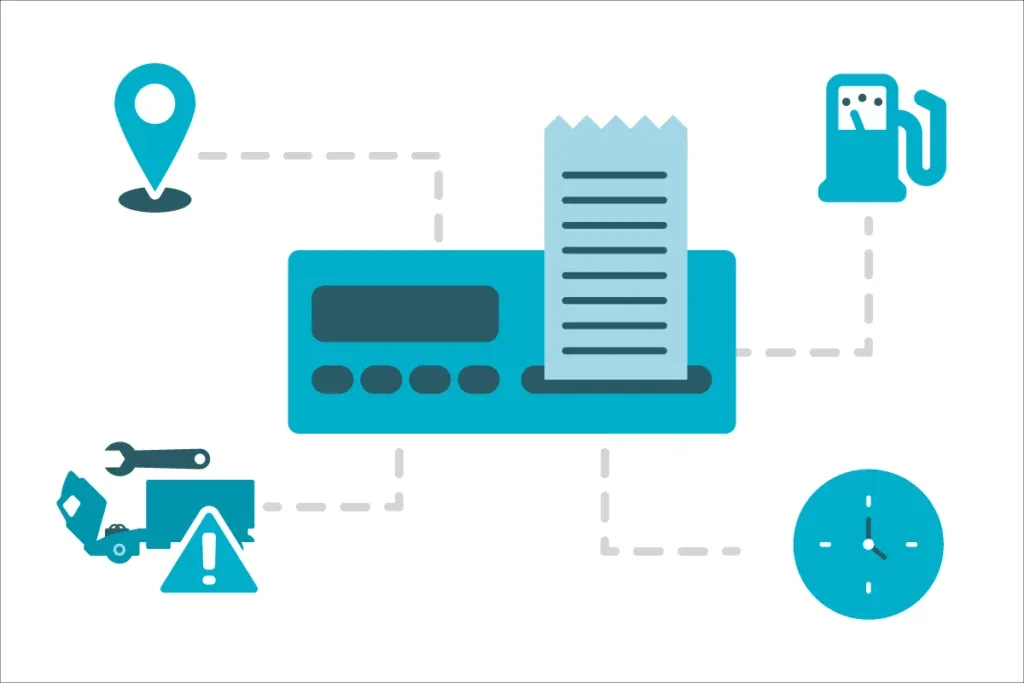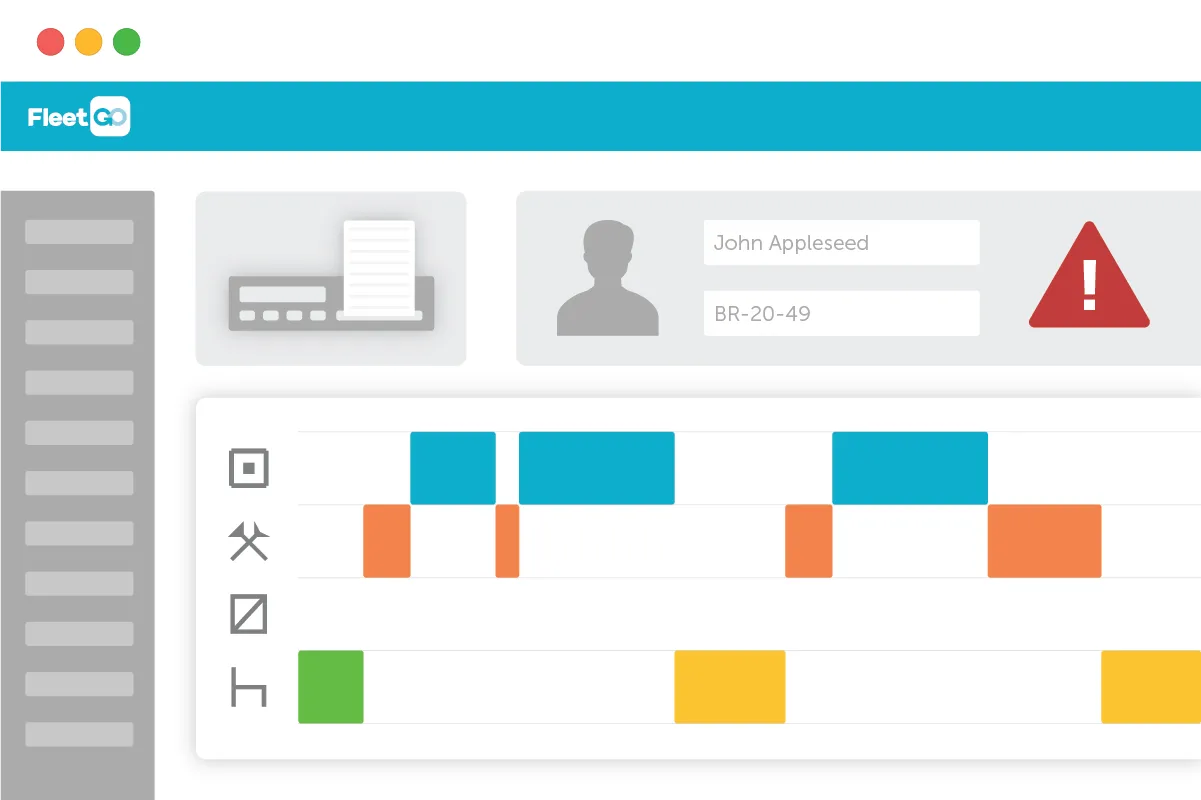Tachograph data is an important part of the daily operation of companies that deal with driving and rest times. This is because the data contains all information regarding driving and rest times and serves as evidence for the legislator. In this article, we’ll take a detailed look at tachograph data and everything connected with it.
Types of tachograph data
In the first place, it is important to know how tachograph data is structured. There are two primary data carriers:
• The tachograph itself, known as the “mass memory”;
• The driver card.

Never risk any tachograph fines again!
Get started with analysing your tachograph files with the FleetGO all-in-one tacho solution. Never miss an infringement again!
Chances of getting invested are higher than ever!

Mass memory tachograph
The tachograph itself stores all tachograph data in the mass memory. The tachograph is linked to the gearbox and vehicle computer and records all the vehicle’s activities. The tachograph records the driving and rest times, the speed and the distance travelled. In addition to the automatic observations, the driver has to operate the tachograph by indicating whether the vehicle is being driven (= automatic), whether work is being done (such as loading and unloading) or when a break or rest is taken. The individual data is stored on the driver card as well, but even when there is no driver card in the tachograph, the tachograph records everything in the mass memory.
- The mass memory must be read out every 90 days.
Driver card data
The tachograph data is stored on the driver card as well as the mass memory. Every driver has to comply with the legislation for driving and rest times, and his/her driving and rest times are recorded on this personal card. The driver card data contains the same information as the mass memory, but it is linked to the driver. Data is written on the driver card only when it is in the tachograph.
So, if the vehicle is driven without a card (which is an offence in itself!), the data is stored not on the driver card but in the mass memory. This means everything can always be viewed in the mass memory.
- The driver card must be read out every 28 days.
Reading out tachograph data
As mentioned earlier, the tachograph data must be read out periodically. This must be done every 90 days for the mass memory and every 28 days for the driver card. Special equipment is required for reading out .ddd files.
Remote Tacho Download
Reading out all data from both the mass memory and the driver cards is a time-consuming job. FleetGO offers a fully automated system for central downloading and archiving of all data.
Tachograph data analysis
To meet legal requirements, it is not sufficient simply to download and archive the tachograph data. The employer is also obliged to check whether the drivers have complied with the Driving Hours Act. After all, this is the purpose of the tachograph: it’s a system to check whether legal obligations are being met.
To check whether the drivers have complied with the law, the tachograph data must be analysed. This requires special software that can “decipher” the tachograph data and check whether the data is complete and whether any offences have been committed. If this is the case, the employer must formally notify the driver and compile a record. This is important when the entire archive is examined. Penalties are usually imposed on the basis of the overall picture rather than isolated incidents.
FleetGO Tachograph Analysis
FleetGO offers a unique integrated tachograph analysis. In addition to the fully automatic download, all files are analysed to see whether the archive is complete and whether any offences have occurred.
Management of tachograph data
Tachograph data management is a time-consuming job, especially when it involves multiple vehicles and drivers. This means it’s important to use a good system for it. The various download and analysis tools available usually provide for this. There is, however, a great deal of variation in user-friendliness and reporting options. Management of tachograph data with all its ramifications and risks is often underestimated.
Tachograph data archiving
The driving and rest time legislation stipulates that the tachograph data must be retained for a minimum of one year. However, if the data is also used for other purposes, such as compliance with tax regulations, the tachograph data must be retained for longer. In Great Britain this is for 6 years after the end of your accounting period.
Tachograph data protection
Besides sound management and archiving of tachograph data, it is important to protect the data adequately. This is actually achieved very easily by saving copies locally or on the company server and creating regular backups of both this data and the data in the actual archive (such as the archive within the FleetGO web application). If the archive is incomplete, for whatever reason, the penalties can increase considerably.
Disclaimer
This content is provided for informational purposes only and is not meant to be an endorsement or representation by FleetGO.com or any other party. This information may contain inaccuracies or typographical errors, despite our efforts to ensure accuracy. FleetGO.com accepts no responsibility or liability for any errors or omissions, and is not responsible for the contents of any linked website or any link contained in a linked website. Please refer to our full disclaimer for more details.


